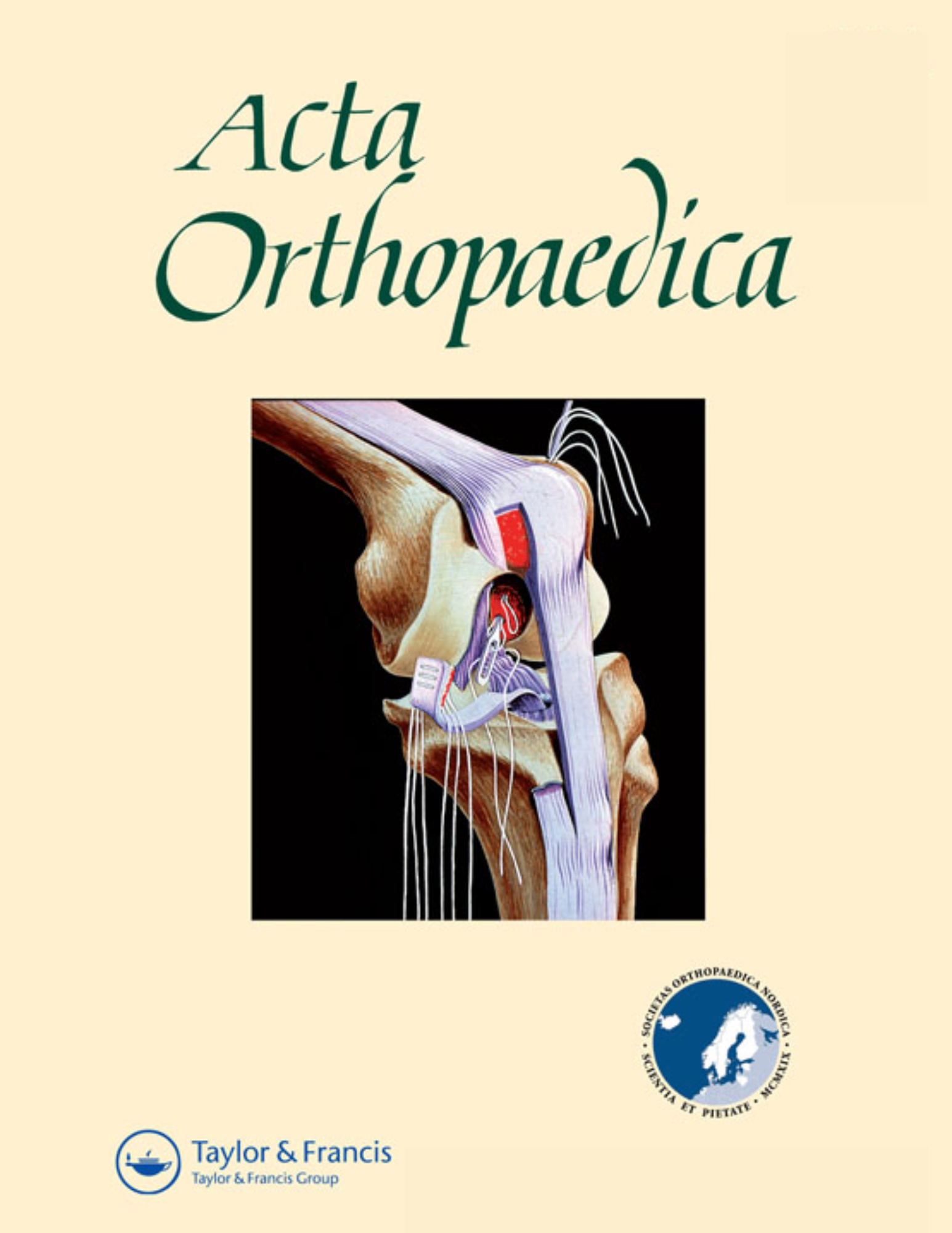
Single bisphosphonate infusion does not speed up fracture healing in high tibial osteotomy

Single bisphosphonate infusion does not speed up fracture healing in high tibial osteotomy
A single bisphosphonate infusion does not accelerate fracture healing in high tibial osteotomies
Acta Orthop. 2011 Aug;82(4):465-70. Epub 2011 Jun 21Did you know you're eligible to earn 0.5 CME credits for reading this report? Click Here
Synopsis
46 patients with knee osteoarthritis undergoing high tibial osteotomies were randomized 4 weeks postoperatively to receive a single bisphosphonate infusion of zoledronic acid or a sodium chloride placebo. The primary outcome was reduction in healing time. Other outcomes included hip knee ankle (HKA) angle and patient-relevant outcome measures (Knee injury and osteoarthritis outcomes score (KOOS)). Results indicated that a single bisphosphonate infusion intervention does not accelerate healing in high tibial osteotomies.
Was the allocation sequence adequately generated?
Was allocation adequately concealed?
Blinding Treatment Providers: Was knowledge of the allocated interventions adequately prevented?
Blinding Outcome Assessors: Was knowledge of the allocated interventions adequately prevented?
Blinding Patients: Was knowledge of the allocated interventions adequately prevented?
Was loss to follow-up (missing outcome data) infrequent?
Are reports of the study free of suggestion of selective outcome reporting?
Were outcomes objective, patient-important and assessed in a manner to limit bias (ie. duplicate assessors, Independent assessors)?
Was the sample size sufficiently large to assure a balance of prognosis and sufficiently large number of outcome events?
Was investigator expertise/experience with both treatment and control techniques likely the same (ie.were criteria for surgeon participation/expertise provided)?
Yes = 1
Uncertain = 0.5
Not Relevant = 0
No = 0
The Reporting Criteria Assessment evaluates the transparency with which authors report the methodological and trial characteristics of the trial within the publication. The assessment is divided into five categories which are presented below.
3/4
Randomization
4/4
Outcome Measurements
4/4
Inclusion / Exclusion
4/4
Therapy Description
4/4
Statistics
Detsky AS, Naylor CD, O'Rourke K, McGeer AJ, L'Abbé KA. J Clin Epidemiol. 1992;45:255-65
The Fragility Index is a tool that aids in the interpretation of significant findings, providing a measure of strength for a result. The Fragility Index represents the number of consecutive events that need to be added to a dichotomous outcome to make the finding no longer significant. A small number represents a weaker finding and a large number represents a stronger finding.
Why was this study needed now?
Strength of a healing fracture has been known to increase with the use of anti-catabolic drugs, such as bisphosphonates. A human pilot study examined high tibial osteotomies in knee osteoarthritis, which indicated healing time was shortened with the use of bisphosphonates. The current study examines the effect of a bisphosphonate (zoledronic acid) infusion on reducing healing time after high tibial osteotomies.
What was the principal research question?
What are the outcomes in rate of fracture healing, hip-knee-ankle (HKA) angle, and patient-relevant outcome measures when a single bisphosphonate (zoledronic acid) infusion is intravenously administered, compared to a sodium chloride placebo in patients with knee osteoarthritis after undergoing a high tibial osteotomy?
What were the important findings?
- All osteotomies healed in both the zoledronic acid (intervention) and sodium chloride (control) groups.
- No difference was seen in the rate of healing between the intervention and control group. Zoledronic group: 77 days (95% CI: 75-80); Sodium chloride group: 77 days (95%CI: 74-81). However, pin fixation of the external frame increased with the intervention of a single zoledronic acid infusion.
- The DEXA analysis indicated similar outcomes in bone mineral density and bone mineral content between the two groups.
- Both groups showed an improvement in KOOS scores. Small but non-statistically significant differences were seen between the groups.
- For the hip, knee, ankle (HKA) angles, no change was seen between the two groups. The zoledronic group had a mean change of 0.3 (SD 3.3) degrees compared to -1.0 (SD 3.3) degrees in the control group (p=0.2)
- 13/25 patients from the zoledronic group reported muscle pain and influenza-like symptoms compared to 2/21 patients from the placebo group (RR=5, CI: 1.3-20; p=0.004).
- According to the radiographic results, both the intervention and control group retained correction when examined at the 1.5-year follow-up.
What should I remember most?
The single zoledronic acid (bisphosphonate) infusion intervention did not accelerate healing in high tibial osteotomies when compared to the sodium chloride placebo. However, there was an increase in pin fixation of the external frame in the zoledronic acid group.
How will this affect the care of my patients?
The use of a single dose of zoledronic acid after undergoing a knee osteotomy does not appear to provide patients with an increased rate of fracture healing. Further examination is required to identify if single dose zoledronic acid treatment provides improved healing rates or superior bone mineral density for different orthopaedic procedures.
Learn about our AI Driven
High Impact Search Feature
Our AI driven High Impact metric calculates the impact an article will have by considering both the publishing journal and the content of the article itself. Built using the latest advances in natural language processing, OE High Impact predicts an article’s future number of citations better than impact factor alone.
Continue



 LOGIN
LOGIN

Join the Conversation
Please Login or Join to leave comments.